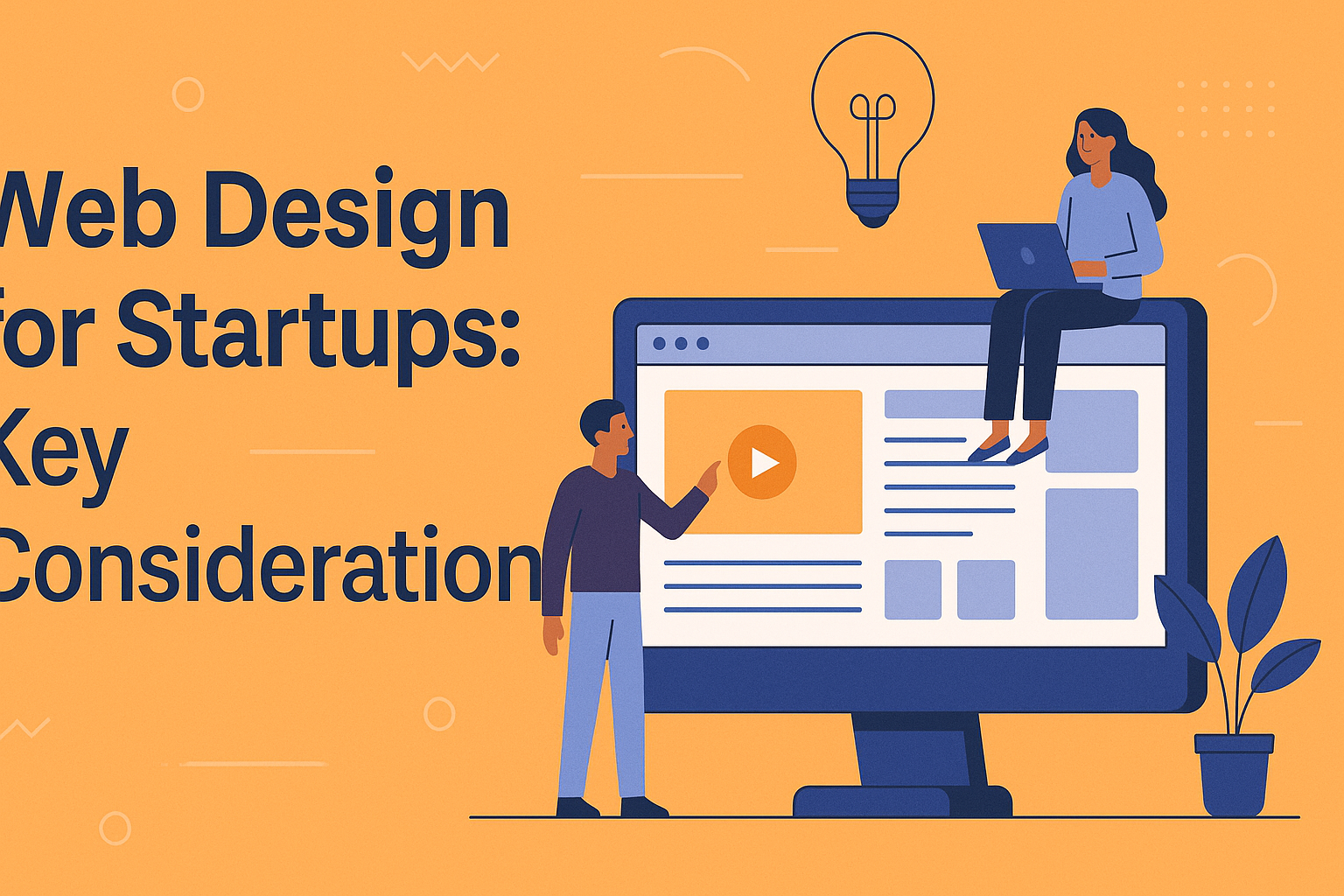Startups need to move fast—but that doesn’t mean you should rush your website. A well-designed site builds credibility, communicates your value, and helps you attract customers and investors. In this guide, you’ll learn the most important web design considerations for startups and how to make your website work for your growth.
- Start With Your Brand IdentityBefore you start designing, clarify:
Your brand voice and tone
Color palette and typography
Logo and visual elements
Core messaging and value proposition
A strong, consistent brand identity helps you stand out and build trust. - Define Your Website’s PurposeWhat’s the main goal of your site?
Collect leads?
Sell a product?
Book demo calls?
Explain your concept to investors?
Every section of your site should serve that purpose. - Keep It Simple and FocusedStartups often overwhelm visitors with too much info. Keep it clean:
Clear navigation
Short, impactful sections
One strong CTA per page
Minimalist, distraction-free layout
Focus on clarity, not complexity. - Design Mobile-FirstMost users will visit from a mobile device. Your site should:
Load fast on mobile
Use large buttons and readable text
Avoid horizontal scrolling
Be fully responsive across all devices - Use Landing Pages for Targeted GoalsCreate separate landing pages for:
Ads or campaigns
Product launches
Lead magnets
Investor decks or pitch requests
This improves clarity and conversion. - Include Social Proof and ValidationBuild trust early by including:
Testimonials or case studies
Media mentions or awards
User reviews or success metrics
Logos of clients or partners
Even a few key proof points can elevate credibility. - Optimize for Speed and SEOFast-loading, search-friendly sites rank better and convert more:
Compress images
Use lightweight themes and plugins
Add meta titles, descriptions, and keywords
Submit a sitemap to Google - Make It Easy to Contact YouStartups often miss this. Add:
A visible contact form
Email address and phone (if applicable)
Links to social media
Live chat (optional but helpful) - Highlight Your Product or Service ClearlyIf you’re selling something, showcase it well:
Use visuals or mockups
Highlight benefits over features
Include a demo video or product walkthrough
CTA like “Start Free Trial” or “Book Demo” - Set Up Analytics From Day OneTrack traffic, user behavior, and conversions:
Google Analytics
Google Search Console
Hotjar (for heatmaps)
Facebook Pixel (if running ads)
This data will guide future design and marketing decisions.
How I Help Startups Launch SmarterI design websites that help startups build credibility, generate leads, and scale. My startup-focused services include:
Brand-aligned WordPress design
Conversion-optimized layouts
Mobile-first development
SEO setup and content strategy
If you’re ready to launch with impact, let’s talk.
Conclusion
A startup website isn’t just about looking good—it’s about working smart. With the right design approach, you can attract the right users, communicate clearly, and grow faster.
Start simple, stay clear, and evolve as you go.
FAQsQ: How much should a startup website cost?A: Anywhere from $500 to $5,000+ depending on features and customization.
Q: Can I build it myself with a template?A: Yes, but working with a designer helps you avoid costly mistakes and saves time.
Q: What pages should a startup site have?A: Home, About, Services/Products, Contact, and a dedicated landing page or two.

